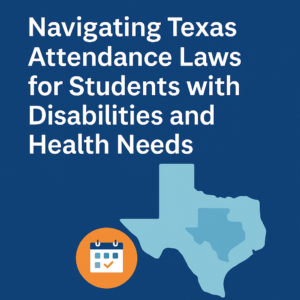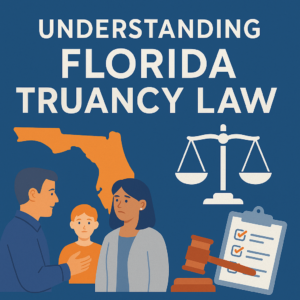There are Five Tenets that will create a positive impact on addressing School Avoidance:
- Raise Awareness
- Identify and Respond to Student Attendance Data
- Address Root Causes of School Avoidance
- Evaluate System Effectiveness
- Refer to Appropriate Supports

Raise awareness:
It is imperative that all school community members are fully aware of the effects of chronic absenteeism. It is the duty of the school administration and the attendance supervisors for the district to inform and engage all school community members in the discussion around school avoidance including support staff, teachers, campus supervisors, parents, students, and anyone who encounters students for the purpose of education. Attendance supervisors are responsible for sharing the successes and areas of concern in each interaction just as a teacher provides methods to share curriculum with students, the attendance habits of the students have a direct on “whole-child” school success as measured in grades, social skills, emotional regulation, and ultimately timely completion of courses, grade spans, leading to graduation and other life outcomes.
Each outcome can be measured and reported in shared information sessions addressing social, emotional, cognitive, academic, physical, and mental health in multiple settings such as parent education conferences, school engagement data, cumulative and individual assessments, attendance and graduation statistics. Not only does school avoidance impact academic progress, but it also impacts the family and the future of the community as a whole. By sharing the reasons behind attendance policies and providing appropriate support, the student, family, and community benefit from that positive approach. The teamwork involved in coming to the realization that school avoidance impacts individual students’ successes but may reduce ignorance and apathy of students who will become the responsible adults of the future. Responsibility is identified as a person who is honest, independent, and reliable; the goal of education is to encourage students in such a positive manner. Schools, parents, and students are held responsible when we address School Avoidance, systemically and individually.
There has been a national initiative through the United States Department of Education (USDE) since 2015 that sought to address and eliminate chronic absenteeism, yet we still find that local schools are slow to change their approaches. During the 2015-16 school year, 1-6 students missed more than 10% of school days, approximately 16% of the student population, over 7 million students were reported chronically absent, twice the population of Oklahoma!
The pandemic exacerbated the home to school barriers when isolation and social interactions were stagnated by the “flat screen” remote classes, which in turn created more anxiety and school avoidance behaviors. Since returning to school, we have not “returned to normal”. There is a newness to instruction that recognizes that more than missing classes for instruction, school avoidance has contributed to stilted social skills directly related to lack of classroom structure, inequality of access to learning as families survived financial crises such as loss of job for one or more adults, shelter due to eviction, food insecurity, and immediate or extended family death. During the Online Instruction span during COVID-19, the absenteeism rate increased to 39% of the school population, over 17 million students, about the entire population of New York. After two years of returning to school in the 2021-22 school year, the chronic absenteeism rate has returned to 17% of the student population but with 84% of public schools reporting negative impacts directly related to socio-emotional development and school avoidance behaviors, classroom teacher scarcity, increased behavioral exclusionary practices such as suspension or expulsion in-turn requiring innovative approaches to impart timely information to all community members to deliver urgency in aligning to the USDE initiative.
Identify and respond to student attendance data:
What data is needed to examine where early intervention will be best served will need to be examined in groups according to each school community. Data collection can be collected according to absence reporting per unique absence codes: physical health, mental health, behavioral health, corresponding appointments per parent reporting and evidence of clinical visits or school nurse health plans are an ideal starting point. If absences are accepted by the support staff or teachers by parent calls, notes, or other communications, at what point does the local policy require either a clinical visit or the school nurse to create a health plan to address the frequency? The attendance supervisor will respond to district policies and data to make recommendations to the school administration depending upon the school group needs.

Early baseline data will be measured according to the groups who need to reduce school avoidance. Attendance supervisors will query attendance data from the previous school year by the following groups to determine need of intervention: race/ethnicity, gender, grade span, home language, ability/disability or special education eligibility, limited resources/poverty, environmental violence, and parental education achievement which all provide contributing factors individually or in total toward student attendance. The response will be best provided as the attendance supervisor works with a council of contributors who will review the data monthly according to the group dynamics with key stakeholders providing input on what may best make a difference in the interventions suggested. For each representative to be a valuable team member, outreach and development becomes a schoolwide project. Representation of adults and students who directly represent each above-mentioned group provides an opportunity to contribute toward the overall ability of the students to not only survive but thrive in school.
Address root causes of school avoidance:
Once you have the data indicating the groups of students who need to systemically have issues resolved, you will pull together community members who are directly involved with those groups to discuss much needed resources or services to address their unique needs as a whole. For example, if the homeless population is finding that the overall population is missing school more often than students who are housed, you will want to assemble a panel that includes homeless education liaisons, parents and mature students who are experiencing homelessness, transportation coordinator, school nurse, and attendance outreach coordinator. The outreach coordinator will gather key information from the families who will share with the team what are the key barriers to attendance. We know that reliable transportation and accessible health care is already a factor, but in the team meeting other regional information may come to the surface. If there is extreme weather causing issues for those experiencing homelessness, how could those be addressed? A coat closet on campus for lost or coats that no longer fit students could be a place to start. Perhaps a washer and dryer on campus could be installed to create a safe place to wash and dry clothing or uniforms.
Every individual student group may have within their population individual needs that will need to be addressed beyond the typical factors. We know that individuals are not defined by their circumstances, that is when Student Attendance Meetings come into play. Addressing the unique needs of the individuals who continue to display behaviors toward School Avoidance is best served in a supportive and responsible manner.
Student Study (or “Success”) Team (SST) is gathered with the support network needed for each individual student including student, parent, teacher(s), school nurse, intervention specialist, attendance outreach coordinator, or any other persons who work with the individual student according to their unique needs. Although the SST is not a means to address special education, sometimes it may lead to a deeper evaluation or assessment if the SST members deem that to be appropriate. Rather, the SST is intended to look at all aspects impacting the whole child approach in reviewing academic, physical, social, emotional, behavioral and consistency in the education of the student. The SST will consist of problems and solutions from each participant’s perspective, and this is why the parent and child are important members of the team. In the end, the school is not doing something “to” the student but working “with” the student and their supportive family members. A working document showing challenges, concerns, and student success will be produced along with a plan to address the challenges and concerning behaviors, including School Avoidance. Referrals may be made to address specific needs that are causing the avoidance or other challenges.
The SST is a sounding board that may result in high-impact and low-cost solutions such as the following examples:
- Impaired vision – school nurse evaluation, referral to clinic and service clubs such as Kiwanis International who may support cost of doctor visit and corrective lenses.
- Social problems – school counseling group and individual sessions, school psychologist evaluation, referrals to clinical family/student services, and behavioral interventions during recess or playtime on campus.
- Medical or Psychological – school nurse and school social worker, referrals to low or no cost clinics, telehealth, or community welfare resources for healthy children.
- Language barriers – interpreters to attend for parent benefit, student English as Second Language evaluations and appropriate language development per grade span, along with parent culture/language groups may provide introduction as liaison to school supports or assist schools in building their home-to-school partnerships within their own communities.

Evaluate system effectiveness:
It is imperative to make sure the plans in place for groups or individuals are causing positive changes in the return to regular attendance and that the individual needs of students are making a difference in their access to education and a positive future. Early interventions hold a higher impact. Students who are chronically absent in lower grades are less likely to be proficient academically and more likely to have behavioral issues and disciplinary exclusions. Young children who do not “learn to read” are at a disadvantage when they must “read to learn” in the advance grade spans. This academic disparity increases as the work becomes more complicated without the strong foundation of early education.
Regular and systematic evaluation of the planned interventions in groups and for individual students is best found at a minimum of monthly attendance reporting coupled with grade period student outcomes in grades, behavior, and discipline referrals.
The Attendance Supervisor should be discussing the groups within each population team who first addressed the data to propose systemic interventions. Those same teams should be meeting to review the interventions put in place and what change is noted looking for increased attendance, improved grades, reduced behavioral referrals and reduced exclusionary practices such as suspensions or expulsions. Also, if there are other potential factors not originally considered, discussion around “What else may be needed?” is a constant part of the monthly agenda.
Likewise, the Intervention Specialist should be discussing the status of the individual students’ behaviors including attendance and access to curriculum with the Parent and the Student on a monthly check-in basis. The discussions will include a report on any positive changes that have resulted from supports or resources, or if there is difficulty in bringing the plan to fruition, what other supports may be needed. Local service organizations, Health Clinics, and Student Welfare for County or State may have additional outside referrals that may be appropriate. The School Social Worker or School Counselor may have access to a network of providers. Invite any additional school support staff to the following monthly discussion, as needed. Remember that families have outside responsibilities for their family such as work, non-school aged children, elderly parents to care for and so on. Work your meetings to fit their schedule as best you can. Make it easy to connect by phone or online meeting platforms when parents determine they are available. The extra effort will create a positive communication between home and school and in the end will be more productive.
Refer to appropriate supports:
Lastly, the appropriate supports need to be gathered with community leadership assistance. What makes a support approprite? Ensure the following properties of any referral when looking to “appropriateness”:
- Collaborative – working with who will be impacted. The goal is to provide either a pathway or advocacy for the parent or child to learn to use when challenges arise. We do not assume we know what is best without their input, that is counter-productive.
- Empathic – seeking to understand and validate the current experience. An unbiased and non-judgemental approach opens up conversations. It is not our own values and understanding to be followed, but a shared understanding of what the student and their family are experiencing in the moment.
- Explorative – looking to what has worked in the past or not, and reasons why. Ask about the past successes to address positive outcomes from efforts. Do not seek to repeat punitive or ineffective measures. Trying innovative solutions will more likely provide a “can do” attitude instead of “this again?” response.
- Beneficial – does the referral match the need? Counseling will not provide any help when transportation when needed. Getting tokens for public or school bus may help. Assessing for adaptations, accommodations, and modifications meeting individualized student learning styles, interests, and abilities is imperative. There is not one answer that fits all situations.
- Advantageous: does the proposed referral provide directly to the need? The refrral should be for emotional support, coping skill development, self or family awareness, communication skills, and overall enhanced problem-solving skills, or any combination that is called for in group or individual cases.
The local Chamber of Commerce may have some resources as well as the local community health networks. The issues that are impacting student groups and individuals are varied and a wealth of resources needs to be procured and managed by the Attendance Supervisor and shared with all.
How are referrals best shared?
- Direct referrals for individual students that come from collaborative SST meetings.
- Invite the community organizations to provide either brochures or contact information and keep it updated for your community – perhaps a resource library or counseling corner can house the information for easy access. Service Organizations can provide scholarships or sliding scale support for students in financial need.
- Promote extra-curricular activities that can build community and social skill development for students to practice outside of school. The YMCA, Boys & Girls Clubs, Teen Centers, and Special Education Sporting can all be accessed by students who live within the community according to their interests.
- School nurses can refer to state medical, dental, and nutritional supportive networks and assist with applications.
- Family and juvenile courts typically have juvenile diversion programs or student courts to participate in a non-threatening manner and to fully understand the systems in which local laws and enforcement are bound.
- Child Welfare and Public Health is managed by counties and states and are a wealth of resources for physical and mental health organizations. The local County Office of Education can provide local and statewide resources.
- The US Department of Education and the US Department of Health and Human Services Office of Civil Rights can provide resources for local Special Education Local Planning Areas (SELPA) to locate independent assessments and specialized programs with additional supports from the Regional Centers for students with developmental needs.
Concluding Remarks:
When the Attendance Supervisor is charged with reducing School Avoidance the population of students by groups or individually is best met with systematic and individual plans in cooperation with school supportive staff along with the student and parent. It is not a “one and done” job but an on-going approach to review the data, address the issues in group or individual needs, appropriate tracking and evaluating the data, and overall raise awareness and appropriate interventions to provide support. Punitive approaches are not effective and do not build toward a community with positive outcomes. Appropriate referrals to services and resources is the best method to systematically and consistently provide a means to reduce School Avoidance. Utilizing the Five Tenants to make a positive impact on School Avoidance is achievable in teamwork. It is not an individual student, parent, or school official responsibility but an overall need to join together to succeed for student populations as a whole and individual students who have more involved unique needs.






